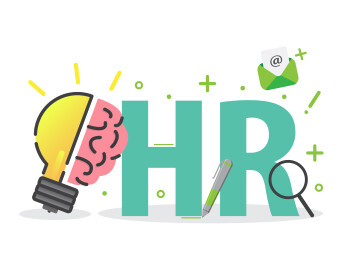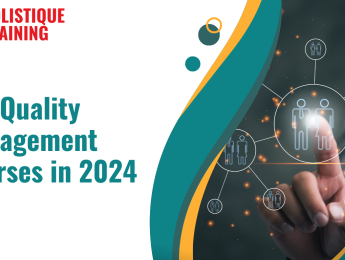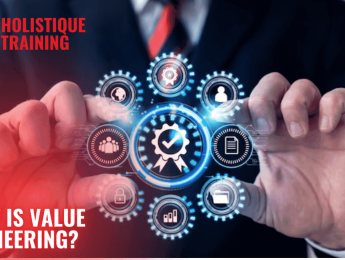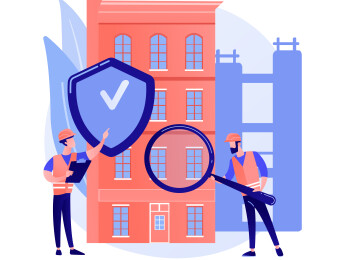- Table of Contents
- Introduction
- What Is the HR Life Cycle?
- The Importance of an HR Life Cycle
- Alignment with Organisational Goals
- Employee Engagement and Retention
- Legal Compliance
- Talent Management
- Enhanced Communication and Collaboration
- Increased Productivity and Efficiency
- Proactive Problem Solving and Conflict Resolution
- Cultivation of Organisational Culture
- The Five Stages of the HR Life Cycle
- 1. Recruitment and Selection
- 2. Onboarding and Orientation
- 3. Performance Management
- 4. Employee Development
- 5. Offboarding and Separation
- The Future of the HR Life Cycle
- Recruitment Revolutionised
- Predictive Analytics for Employee Performance
- Personalised Learning and Development
- Augmented Decision-Making, not Replacement
- Enhanced Employee Experience
- Data-Driven Diversity and Inclusion
- Conclusion
Introduction
Human resources (HR) plays a critical role in organisations, acting as the backbone supporting employee growth, development, and success. HR professionals follow a structured approach known as the HR life cycle to manage human capital effectively. In this blog post, we will delve into the concept of the HR life cycle, its significance, and the five stages that compose it. So, let's embark on this journey of understanding the intricate HR processes that contribute to the overall success of businesses.
What Is the HR Life Cycle?
As the name suggests, the HR life cycle comprises various stages in managing the employment relationship between an organisation and its employees. It's a holistic approach that covers the entire journey of an employee, from the moment they are recruited to their eventual retirement or separation. This cycle encompasses several critical HR activities: recruitment, onboarding, performance management, employee development, and offboarding. By systematically following this cycle, HR professionals ensure that human capital is efficiently managed and nurtured, contributing to a positive and thriving work environment.
The Importance of an HR Life Cycle
The HR life cycle is not just a mere organisational formality but the strategic backbone guiding an organisation's success. Its importance cannot be overstated, as it ensures that HR practices are not just haphazard activities but well-thought-out processes aligning with the organisation's broader objectives.
Alignment with Organisational Goals
Imagine an organisation as a ship sailing in the vast market sea. The HR life cycle serves as the navigation system, ensuring that the ship stays on course. By understanding and implementing each stage of the HR life cycle, HR professionals can design programmes and policies that resonate with the organisation's strategic goals. For instance, if the company aims to expand its market presence, the HR team can focus on recruitment strategies that target specific skill sets needed for expansion. This alignment ensures that HR efforts are not isolated but contribute significantly to the company's overarching goals, making the organisation more agile and responsive to market demands.
Employee Engagement and Retention
Employee engagement is the heartbeat of a thriving organisation. The HR life cycle plays a pivotal role in maintaining this heartbeat. HR professionals can foster a sense of belonging and purpose among employees through systematic processes such as onboarding and performance management. Employees feel valued and engaged when they understand their roles clearly, have growth opportunities, and receive regular feedback. Engaged employees are more productive and more likely to remain with the organisation, reducing turnover rates. By investing in each stage of the HR life cycle, companies create a positive work culture where employees are motivated, satisfied, and dedicated to their work, directly impacting the bottom line.
Legal Compliance
In today's complex legal landscape, staying compliant with employment laws and regulations is paramount. The HR life cycle serves as a safeguard, ensuring that organisations adhere to legal requirements related to recruitment, equal opportunity employment, employee rights, and fair treatment. Businesses mitigate legal risks by meticulously following the HR life cycle, avoiding potential lawsuits and financial penalties. This not only safeguards the organisation but also builds a reputation for ethical and responsible conduct, enhancing the organisation’s credibility and trustworthiness in the eyes of stakeholders, clients, and potential employees.
Talent Management
Talent is the lifeblood of any organisation. Identifying, nurturing, and retaining top talent is a challenge that the HR life cycle effectively addresses. Through careful recruitment processes, HR professionals bring in individuals with not only the right skills but also the right cultural fit. Subsequently, the HR life cycle facilitates continuous development, ensuring that employees have the skills necessary to navigate the industry's ever-changing demands. Moreover, organisations motivate employees to excel and contribute significantly by recognising and rewarding exceptional talent. Talent management, integral to the HR life cycle, thus becomes a key differentiator, enabling companies to outshine competitors and innovate proactively.
Enhanced Communication and Collaboration
The HR life cycle is a conduit for effective organisational communication and collaboration. HR professionals facilitate open communication channels between employees and management during the onboarding and performance management stages. Clear communication about expectations, goals, and feedback creates a transparent work environment. Moreover, HR encourages collaboration by organising team-building activities, workshops, and cross-functional projects. Enhanced communication and collaboration improve internal processes and stimulate innovation as employees from diverse backgrounds and departments share ideas and perspectives.
Increased Productivity and Efficiency
A well-structured HR life cycle ensures employees have the necessary resources, training, and support to excel in their roles. When employees understand their tasks and responsibilities clearly and receive regular feedback and coaching, they become more proficient and efficient in their jobs. Additionally, streamlined recruitment, onboarding, and training processes save HR professionals and employees time and resources. By optimising workflows and eliminating bottlenecks, organisations can significantly enhance overall productivity, allowing employees to focus on their core responsibilities, leading to improved output and higher-quality work.
Proactive Problem Solving and Conflict Resolution
Conflicts and challenges are inevitable in any workplace. The HR life cycle equips HR professionals with the tools and methodologies to handle these situations proactively. Potential issues can be identified early through performance management and employee development stages. HR can then provide necessary interventions, such as additional training or coaching, to address performance concerns before they escalate. Moreover, HR professionals are trained in conflict resolution techniques, enabling them to mediate disputes and foster a harmonious work environment. The HR life cycle minimises disruptions by resolving issues promptly and professionally, allowing employees to focus on their tasks without unnecessary distractions.
Cultivation of Organisational Culture
Organisational culture is the collective personality of an organisation — its values, beliefs, and behaviours. The HR life cycle is crucial in cultivating and preserving a positive and vibrant organisational culture. Through stages like onboarding and orientation, HR professionals introduce new employees to the company’s values, mission, and vision. As employees progress through the stages of the HR life cycle, they absorb and embody these cultural elements, fostering a cohesive and unified workforce. Moreover, HR initiatives, such as recognition programmes and team-building events, reinforce the desired organisational culture, creating a sense of employee belonging and pride. A strong organisational culture attracts like-minded talent and enhances employee engagement and loyalty, creating a resilient and motivated workforce.
The HR life cycle is the cornerstone upon which a thriving, sustainable organisation is built. It’s not just about managing employees; it's about strategically nurturing human capital, aligning efforts with organisational goals, fostering engagement, ensuring legal compliance, and nurturing talent. By recognising the pivotal role of the HR life cycle and investing in its seamless implementation, organisations pave the way for enduring success in an ever-evolving business landscape.
The Five Stages of the HR Life Cycle
Understanding the intricacies of the five stages within the HR life cycle is crucial for HR professionals. Each stage represents a significant milestone in an employee's journey, and effective management at every step ensures a harmonious and productive work environment.
1. Recruitment and Selection
The recruitment and selection stage serves as the gateway to the organisation. HR professionals collaborate closely with hiring managers to define job requirements and craft compelling job descriptions. They utilise various channels, from job boards to social media platforms, to attract potential candidates. The process involves meticulous resume screening, conducting interviews, and often employing tests or assessments to identify the most suitable individuals. The goal here is not just to fill a position but to find candidates who align with the company's culture and possess the skills and qualifications essential for the role.
Key Activities:
- Defining Job Requirements: Collaborating with hiring managers to outline necessary qualifications and experience.
- Candidate Screening: Reviewing resumes, conducting interviews, and using assessments to assess candidates’ suitability.
- Selection and Offer: Extending offers, negotiating employment terms, and ensuring a smooth organisational transition.
2. Onboarding and Orientation
Once the right candidates are selected, the onboarding and orientation stage begins. This phase is pivotal in helping new employees integrate seamlessly into the organisation. HR professionals facilitate paperwork completion, provide essential training, and introduce new hires to the company's culture, policies, and procedures. A well-structured onboarding process not only accelerates the time it takes for employees to become productive but also sets the tone for a positive work experience, fostering a sense of belonging and enthusiasm. As statistics show, this can lead to an impressive 82% increase in organisation retention rates.
Component | Description |
Paperwork Completion | HR professionals facilitate the completion of necessary employment documents. |
Training and Development | Provide essential training to equip new hires with the required skills. |
Introduction to Culture | Introduce new employees to the organisation's culture, policies, and procedures. |
Introduction to Team | Help new employees build relationships within their teams and across the organisation. |
Table 1: Key activities of onboarding and orientation
3. Performance Management
Performance management is the heartbeat of employee development. In this stage, HR professionals work collaboratively with managers to set clear performance goals and establish metrics for progress. Regular performance reviews provide an opportunity for feedback, recognition of achievements, and discussions about areas for improvement. By recognising and rewarding employees for their contributions, this stage fosters a culture of continuous improvement, motivating employees to excel in their roles. Also, according to Bucketlist, implementing a thoughtfully crafted recognition programme has the potential to boost average employee performance by a notable 11.1%.
Key Activities:
- Goal Setting: Collaborating with employees to establish clear, achievable performance goals.
- Performance Evaluation: Assessing employee performance, highlighting strengths, and identifying areas for improvement.
- Feedback and Recognition: Providing constructive feedback and recognising employees for their contributions.
4. Employee Development
Employee development is an ongoing process that focuses on enhancing skills, knowledge, and capabilities. HR professionals identify training needs through assessments and feedback, designing tailored programmes ranging from workshops and seminars to mentorship initiatives. Investing in continuous learning improves employee skills and boosts engagement, as employees appreciate organisations that invest in their professional growth.
Key Activities:
- Training Needs Analysis: Identifying skill gaps and workforce development areas.
- Training Programmes: Designing and implementing training programmes to address identified gaps.
- Mentorship Initiatives: Pairing experienced employees with newcomers to provide guidance and support.
5. Offboarding and Separation
The final stage of the HR life cycle, offboarding and separation, ensures that employees leaving the organisation do so professionally and positively. HR professionals conduct exit interviews to gather feedback, facilitate knowledge transfer to other team members, and handle necessary paperwork. By ensuring a smooth departure process, organisations maintain positive relationships with former employees, garnering goodwill and potentially even leaving the door open for future collaborations.
Key Activities:
- Exit Interviews: Collect feedback from departing employees and understand their experiences and insights.
- Knowledge Transfer: Facilitating knowledge transfer and responsibilities to other team members.
- Handling Paperwork: Ensuring all necessary paperwork and legal requirements are addressed during the separation process.
In short, these stages represent the holistic journey of an employee within an organisation. When managed effectively, these stages ensure the smooth functioning of HR processes and contribute significantly to the organisation’s success. By carefully navigating through these stages, HR professionals not only nurture individual talents but also foster a positive, engaging work environment, ultimately driving the organisation towards long-term growth and prosperity.
The Future of the HR Life Cycle
As we stand at the intersection of human resources and cutting-edge technology, the future of the HR life cycle is both promising and transformative. Integrating Artificial Intelligence (AI) and digital tools is reshaping how HR professionals manage talent, streamline processes, and enhance the overall employee experience.
Recruitment Revolutionised
In the future, AI algorithms will revolutionise the recruitment landscape. AI-powered software can sift through vast amounts of data from resumes, social media profiles, and online assessments to identify patterns, skills, and qualifications. These algorithms speed up the candidate screening process and increase the accuracy of identifying suitable candidates. Automated chatbots, driven by AI, can engage with potential candidates, answer queries, and even conduct preliminary interviews, providing a seamless and efficient experience for applicants. This technology not only saves time for HR professionals but also ensures a fair and unbiased selection process.
Predictive Analytics for Employee Performance
Fueled by AI, predictive analytics will become instrumental in anticipating employee performance and behaviour patterns. By analysing historical data, AI algorithms can identify productivity, job satisfaction, and retention trends. HR professionals can use these insights to proactively address potential issues, such as burnout or turnover risks. For instance, if certain patterns indicate a higher likelihood of an employee leaving the organisation, HR can intervene with targeted retention strategies, such as additional training or mentorship programmes. Predictive analytics enhance the accuracy of performance evaluations, enabling HR professionals to recognise and reward high performers more effectively.
Personalised Learning and Development
AI-driven learning platforms will transform employee development initiatives. These platforms analyse individual employee skills, learning styles, and preferences to create personalised training programmes. By tailoring learning experiences to meet specific needs, employees can engage in training that is directly relevant to their roles and career aspirations. This not only increases the effectiveness of training but also boosts employee engagement, as employees feel that their professional growth is being nurtured in a customised manner. Furthermore, AI-powered feedback mechanisms can provide real-time insights into learning progress, allowing employees and HR professionals to track development milestones effectively.
Augmented Decision-Making, not Replacement
While AI plays a pivotal role in shaping the future of HR, it's essential to understand that it is a tool for augmented decision-making, not a replacement for human judgement. In fact, statistics show that while a significant majority of HR professionals (67%) are optimistic about the positive impact of AI on the recruitment process, it’s worth noting that around 35% of HR professionals express concerns that relying too heavily on AI in recruitment could potentially overlook unique and unconventional talents. AI can process vast amounts of data, identify trends, and suggest solutions. However, the nuanced aspects of human interactions, such as empathy, intuition, and cultural understanding, are irreplaceable. HR professionals will leverage AI to make data-driven decisions, but the human touch will remain critical, especially in areas like conflict resolution, employee counselling, and understanding the unique talents and aspirations of individuals. Striking a balance between data-driven insights and human intuition will be the hallmark of successful HR management in the digital age.
Enhanced Employee Experience
In the future, digital transformation will focus on enhancing the overall employee experience. AI-powered chatbots and virtual assistants will be available 24/7 to answer employee queries, provide information about company policies, and assist with administrative tasks. Digital platforms will facilitate seamless communication between employees and HR, enabling swift responses to concerns and requests. Moreover, AI algorithms can analyse employee feedback from surveys and performance reviews, providing HR with valuable insights into employee sentiment and areas for improvement. By addressing employee concerns promptly and proactively, organisations can create a positive work culture, leading to higher employee job satisfaction and retention rates.
Data-Driven Diversity and Inclusion
AI will play a pivotal role in promoting diversity and inclusion within organisations. AI can identify potential biases and disparities by analysing data related to hiring processes, promotions, and employee experiences. HR professionals can use these insights to implement strategies that foster a more inclusive workplace. Moreover, AI-driven tools can assist in creating diverse candidate pools by identifying candidates from various backgrounds and experiences. By leveraging AI for diversity and inclusion initiatives, organisations can create a workforce that reflects a rich tapestry of perspectives, enhancing creativity, innovation, and problem-solving within the organisation.
In summary, the future of the HR life cycle is intertwined with the rise of AI and digital transformation. By embracing these technological advancements, HR professionals can enhance recruitment processes, predict and manage employee performance, provide personalised learning experiences, augment decision-making, improve the overall employee experience, and promote diversity and inclusion.
Conclusion
The HR life cycle is the linchpin in the intricate tapestry of organisational success, weaving together recruitment, development, and employee engagement into a cohesive whole. As we navigate the dynamic landscape of modern business, it's imperative to recognise the pivotal role of HR professionals in shaping workplaces where talent thrives and innovation flourishes.
By embracing the nuances of the HR life cycle, organisations create environments where employees are not mere workers but integral contributors, where skills are honed, and potential is realised. From the meticulous recruitment process to the nurturing embrace of employee development, each stage amplifies the organisation's vitality, propelling it towards sustained growth and prosperity.
As we envision the future of work, infused with the power of AI, digital transformation, and remote collaboration, the role of HR becomes even more indispensable. The ability to balance cutting-edge technology with human empathy defines the HR leaders of tomorrow, guiding their organisations through uncharted territories with wisdom and finesse.
Embark on Your HR Journey: Introducing ‘An Introduction into Human Resources’ Course!
Are you ready to dive deeper into the realm of HR excellence? Our course, ‘An Introduction into Human Resources,’ is your gateway to mastering the art and science of human capital management. Uncover the secrets of recruitment strategies, delve into the intricacies of performance management, and explore innovative approaches to employee engagement. Join us on this transformative learning experience, where theory meets real-world application, and empower yourself to drive your organisation to unparalleled success. Don't just follow the future of HR; be the architect of it. Enrol now and shape the future of your career and your organisation.
























